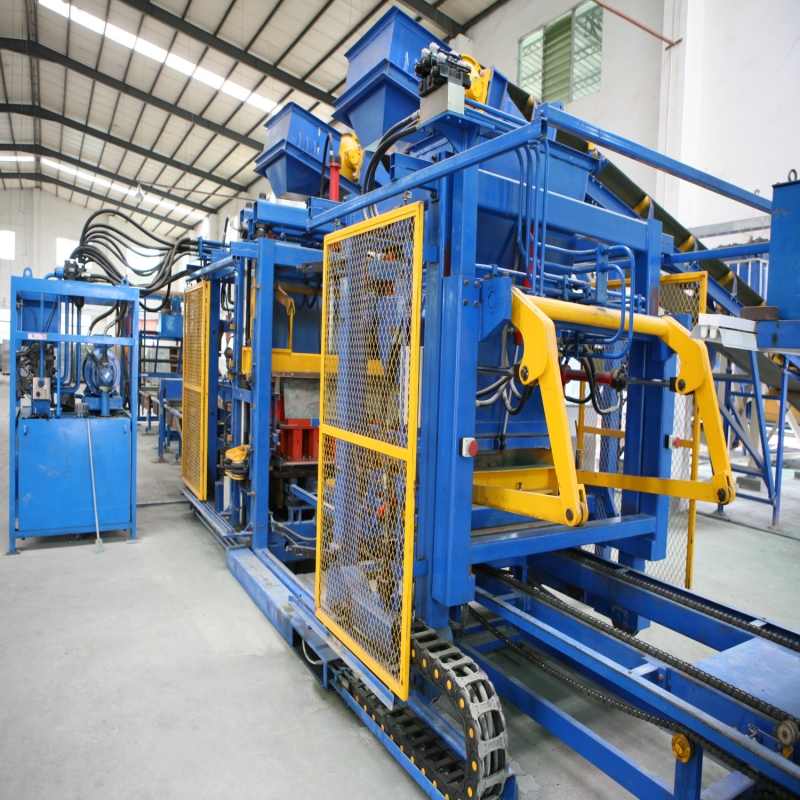Using a paver block machine offers several advantages and limitations compared to automated alternatives:
Advantages of Using a Paver Block Machine:
- Cost-Effectiveness: Paver block machines are generally more affordable than automated alternatives, making them a cost-effective option for small to medium-scale operations or for businesses with budget constraints.
- Flexibility: Paver block machines offer flexibility in terms of production capacity, as they can be adjusted to produce different quantities of paver blocks based on demand.
- Localized Production: Paver block machines can be operated locally, allowing for on-site production of paver blocks without the need for transportation or outsourcing.
- Customization: Paver block machines allow for customization of paver block designs, colors, and sizes to meet specific project requirements or customer preferences.
- Ease of Operation: Paver block machines are relatively simple to operate and require minimal training, making them accessible to operators with varying levels of skill and experience.
- Reduced Dependency on Electricity: Some types of paver block machines are manually operated or use alternative power sources such as diesel or hydraulic power, reducing dependency on electricity and making them suitable for remote or off-grid locations.
- Quick Setup: Paver block machines can be set up and ready for operation relatively quickly, enabling rapid deployment for time-sensitive projects or urgent orders.
Limitations of Using a Paver Block Machine:
- Limited Production Capacity: Paver block machines typically have lower production capacities compared to automated alternatives, resulting in slower output rates and potentially longer lead times for large-scale projects.
- Manual Labor Intensity: Paver block machines often require manual labor for tasks such as feeding raw materials, removing finished blocks,paver block machine price and performing maintenance, which can increase labor costs and limit scalability.
- Inconsistencies in Quality: The quality of paver blocks produced by manual machines may vary due to human error or inconsistencies in production processes, leading to variations in size, shape, and finish.
- Higher Operational Costs: While initial investment costs may be lower for paver block machines, ongoing operational costs such as labor, maintenance, and raw material expenses may be higher compared to automated alternatives over the long term.
- Limited Automation and Control: Paver block machines have limited automation and control features compared to automated alternatives, resulting in less precision, efficiency, and consistency in block production.
- Dependence on Operator Skill: The performance and output of paver block machines may depend heavily on the skill and experience of the operator, leading to potential variations in productivity and quality.
- Potential for Safety Risks: Manual operation of paver block machines may pose safety risks to operators, especially when working with heavy machinery or in hazardous environments, requiring strict adherence to safety protocols and regulations.
Overall, the choice between using a paver block machine and automated alternatives depends on factors such as production volume, budget, project requirements, labor availability, and desired level of automation and control. While paver block machines offer advantages in terms of cost-effectiveness, flexibility, and customization, they also have limitations in terms of production capacity, labor intensity, quality consistency, and operational efficiency compared to automated alternatives.
How does a bricks machinery accommodate changes in production requirements or demand?
Brick machinery can accommodate changes in production requirements or demand through various mechanisms and strategies, including:
- Adjustable Production Speed: Many brick machinery models feature adjustable production speeds, allowing operators to increase or decrease the rate of brick production to match changing demand levels. By modifying the machine’s operating speed, manufacturers can optimize production efficiency and responsiveness to fluctuating market demands.
- Modular Design: Some brick machinery systems are designed with modular components that can be easily reconfigured or expanded to accommodate changes in production requirements. Modular design allows manufacturers to add or remove production modules, upgrade equipment capabilities, or integrate new features as needed to meet evolving demand patterns.
- Quick Changeover Features: Brick machinery may incorporate quick changeover features that enable rapid transition between different brick sizes, shapes, or colors. By minimizing downtime associated with changeovers, manufacturers can enhance production flexibility and responsiveness to customer preferences and market trends.
- Multi-Functionality: Certain brick machinery models offer multi-functionality, allowing them to produce a diverse range of brick products using the same equipment. By offering versatility in brick design and specification, multi-functional machinery can adapt to changing customer demands and market requirements without requiring significant investment in additional equipment.
- Inventory Management Systems: Integrated inventory management systems can help brick manufacturers monitor stock levels, track production trends, and anticipate changes in demand. By leveraging real-time data insights, bricks machinery manufacturers can adjust production schedules, allocate resources efficiently, and minimize excess inventory or stockouts to meet customer needs effectively.
- On-Demand Production: Brick machinery equipped with on-demand production capabilities can produce bricks in response to specific customer orders or customized requirements. By adopting a just-in-time manufacturing approach, manufacturers can minimize inventory holding costs, reduce waste, and optimize resource utilization while meeting customer demand with greater accuracy and efficiency.
- Scalability: Brick machinery with scalable production capabilities can accommodate growth in demand by expanding production capacity or upgrading equipment features as needed. Scalable systems allow manufacturers to scale production output incrementally in response to increasing market demand without incurring significant upfront costs or disruptions to existing operations.
- Flexible Workforce Deployment: Manufacturers can optimize workforce deployment strategies to align with changing production requirements or demand fluctuations. By cross-training employees, implementing flexible scheduling arrangements, or outsourcing production tasks as needed, manufacturers can adapt their workforce to meet evolving production needs effectively and efficiently.
Overall, brick machinery can accommodate changes in production requirements or demand by offering adjustable production speeds, modular design, quick changeover features, multi-functionality, inventory management systems, on-demand production capabilities, scalability, and flexible workforce deployment strategies. By leveraging these mechanisms and strategies, brick manufacturers can enhance production flexibility, responsiveness, and efficiency while meeting customer demands and market trends effectively.
